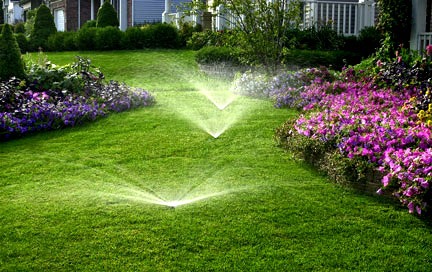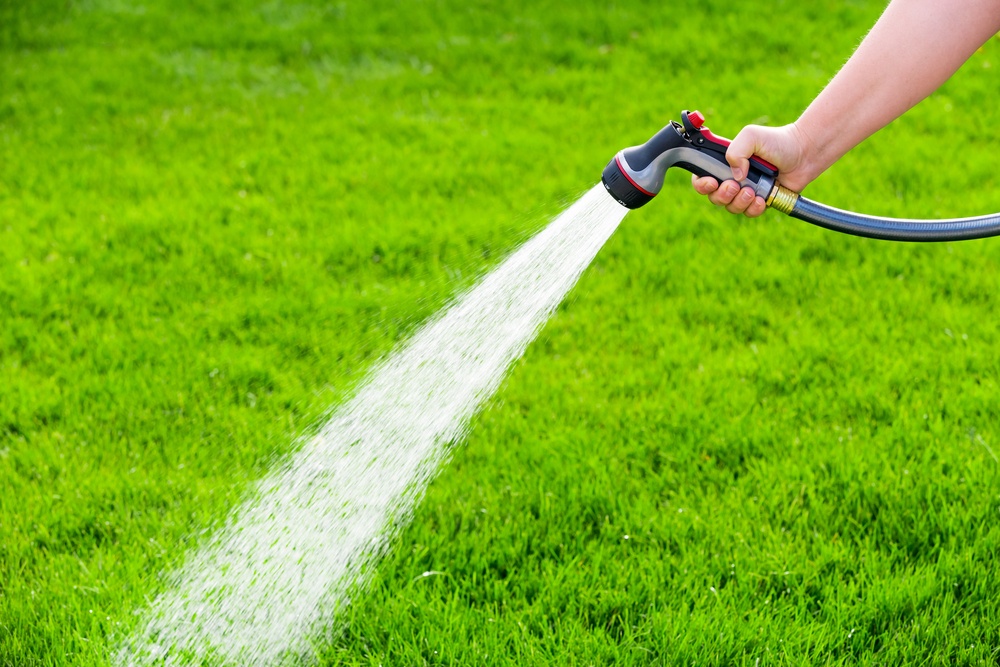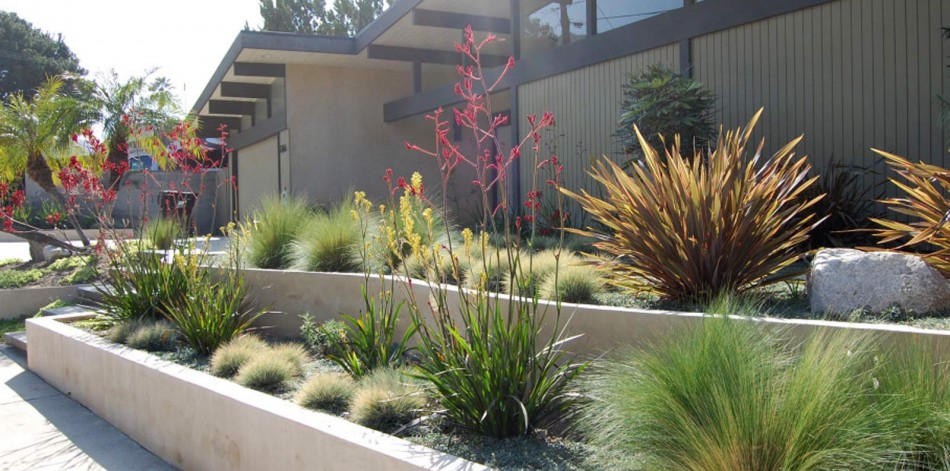Embracing Xeriscaping: The Ultimate Water-Saving Landscape for South Florida
In the heart of South Florida, where the sun reigns supreme and water conservation is not just a practice but a necessity, xeriscaping emerges as the ultimate solution for creating lush, vibrant landscapes that thrive on minimal water. This innovative approach to gardening is not merely about reducing water usage; it’s about reimagining our relationship with the natural world, crafting spaces that are in harmony with the local climate and ecology.
Xeriscaping in South Florida leverages the beauty and resilience of drought-resistant plants, native to the region, to forge gardens that are not only aesthetically pleasing but also environmentally sustainable. By selecting species that are naturally adapted to the local climate, homeowners can enjoy a verdant oasis without the constant need for irrigation. This method not only conserves precious water resources but also significantly reduces maintenance efforts, freeing up time for homeowners to enjoy the beauty of their surroundings rather than laboring over it.
Moreover, xeriscaping transcends the mere selection of drought-tolerant plants. It encompasses a holistic approach to landscaping, incorporating elements such as efficient irrigation systems, mulching, and strategic garden design to minimize water evaporation and runoff. Through these practices, xeriscaping in South Florida not only conserves water but also enhances soil health, supports local wildlife, and reduces the need for chemical fertilizers and pesticides, contributing to a healthier, more sustainable environment.
Embracing xeriscaping in South Florida is not just a landscaping choice; it’s a commitment to water-wise gardening that celebrates the unique flora of the region while addressing the critical need for water conservation. It’s a testament to the fact that beauty and sustainability can go hand in hand, creating outdoor spaces that are as resilient as they are enchanting.
Native Plants: The Heart of Drought-Resistant Gardens
Embracing the beauty and resilience of native plants is a cornerstone of creating a drought-resistant garden in South Florida. These plants, having evolved in the local climate and soil conditions, are naturally equipped to thrive with minimal water, making them an ideal choice for water-wise gardening. By incorporating Florida native drought-tolerant plants into your landscape, you not only contribute to water conservation efforts but also support local biodiversity, providing a habitat for native wildlife such as birds and pollinators.
Among the myriad of benefits, native plants require significantly less maintenance than their non-native counterparts. They are adapted to the local environment, which means they are more resistant to pests and diseases prevalent in South Florida. This reduces the need for chemical interventions, making your garden a safer place for you and the environment. Furthermore, these plants are more likely to survive and flourish during dry spells, ensuring your garden remains a lush, vibrant oasis even in the toughest conditions.
When selecting drought-resistant plants for your South Florida garden, consider species such as the Blanket Flower (Gaillardia pulchella), Beach Sunflower (Helianthus debilis), and the Florida Privet (Forestiera segregata). These plants not only exhibit remarkable drought tolerance but also add a splash of color and texture to your landscape. Consulting with local nurseries or landscaping services specializing in native plants can provide valuable insights and help you make informed choices that align with your aesthetic preferences and conservation goals.
In conclusion, integrating native plants into your garden is a smart, sustainable approach to landscaping in South Florida. It allows you to create a beautiful, low-maintenance garden that conserves water, supports local ecosystems, and stands resilient in the face of drought conditions.

Rock Gardens: Aesthetic and Efficient Landscaping Solutions
Rock gardens have emerged as a cornerstone in the realm of water-wise gardening in South Florida, offering both aesthetic appeal and efficiency in water conservation. This landscaping solution leverages the natural beauty of rocks, stones, and drought-resistant plants to create stunning outdoor spaces that require minimal water. Unlike traditional lawns that demand frequent irrigation, rock gardens thrive in South Florida’s dry conditions, making them an ideal choice for homeowners looking to reduce their water usage and maintenance efforts.
Integrating a variety of rocks and boulders with drought-resistant plants such as sedums, cacti, and Florida native drought-tolerant plants, rock gardens mimic the natural landscapes found in arid regions. This not only creates a visually appealing space but also provides a habitat for local wildlife, promoting biodiversity. The strategic placement of rocks can also help to regulate soil temperature, further reducing the need for water and protecting plants during South Florida’s hot summers.
Moreover, rock gardens offer endless design possibilities, from serene Zen-inspired spaces to rugged, naturalistic landscapes. Homeowners can choose from a wide range of rock types and colors to match their personal style and the architectural features of their homes. By incorporating elements such as pathways, seating areas, and water features, rock gardens can become a focal point for relaxation and entertainment in the outdoor living space.
For those in South Florida looking to embrace xeriscaping and water-wise gardening, rock gardens represent a practical and beautiful solution. They not only conserve water but also enhance the aesthetic and ecological value of the landscape, making them a smart choice for sustainable living in drought-prone areas.
Artificial Turf: A Green Lawn Without the Water Waste
In the quest for a lush, vibrant lawn without the high water bill and constant maintenance, artificial turf emerges as a standout solution for South Florida residents. This innovative landscaping option offers the appearance of a perfectly manicured lawn year-round, without the need for watering, mowing, or fertilizing. The benefits of artificial turf extend beyond its water-saving capabilities. It’s an ideal choice for those looking to reduce their environmental footprint, as it eliminates the need for chemical fertilizers and pesticides that can harm local ecosystems.
Choosing artificial turf doesn’t mean sacrificing the natural beauty of your outdoor space. Modern advancements in synthetic grass technology have led to products that closely mimic the look and feel of real grass. From soft, fine blades that are perfect for barefoot strolls to more durable varieties that can withstand heavy foot traffic, there’s an artificial turf option to suit every need and aesthetic preference.
Installation of artificial turf is straightforward, but it requires careful planning and preparation to ensure longevity and optimal performance. Proper drainage is essential to prevent water pooling and to maintain the turf’s structural integrity over time. Once installed, artificial turf requires minimal upkeep, making it a cost-effective and time-saving landscaping solution. Occasional brushing to lift the blades and rinsing to remove dust and debris are all that’s needed to keep your artificial lawn looking its best.
For South Florida homeowners seeking a water-wise gardening solution that doesn’t compromise on beauty or functionality, artificial turf offers a compelling option. Embrace the convenience and sustainability of a green lawn without the water waste, and enjoy more time relaxing in your outdoor oasis.

Mulching Techniques: Retaining Moisture and Enhancing Soil Health
Mulching is a cornerstone technique in water-wise gardening, particularly vital in the hot, dry climate of South Florida. By applying a protective layer of organic or inorganic materials on the surface of the soil, mulching plays a crucial role in conserving moisture, reducing evaporation, and maintaining soil temperature. This practice not only helps in retaining water but also contributes to enhancing soil health, making it an indispensable strategy in drought-resistant landscaping.
For those embarking on the journey of xeriscaping in South Florida, selecting the right type of mulch is key. Organic mulches, such as shredded bark, pine needles, or compost, not only retain moisture but also gradually break down, enriching the soil with vital nutrients. These materials foster a healthy soil ecosystem, which is essential for the growth of Florida native drought-tolerant plants. On the other hand, inorganic mulches like gravel or pebbles can be used around succulents and rock gardens, complementing the aesthetic while minimizing water loss.
Applying mulch around plants reduces the need for frequent watering, a boon for water-wise gardening enthusiasts. It acts as a barrier against soil moisture evaporation, ensuring that plants remain hydrated for longer periods. Moreover, mulching helps in weed suppression, reducing competition for water and nutrients. This is particularly beneficial in South Florida, where the warm climate can encourage rapid weed growth.
Incorporating mulching techniques into your landscaping not only contributes to water conservation but also promotes a healthier, more resilient garden. By choosing the appropriate mulch and applying it correctly, gardeners in South Florida can enjoy lush, vibrant landscapes that thrive despite the challenges of drought conditions. Embrace mulching as part of your xeriscaping strategy to create a sustainable, low water landscaping oasis in Florida.
Succulent Gardens: Low-Maintenance Beauty for Your Home
Embracing the allure of succulent gardens offers a transformative approach to landscaping in South Florida, where the sun reigns supreme, and water conservation is paramount. These drought-resistant marvels are not only a testament to resilience but also a source of endless aesthetic pleasure. Succulent gardens introduce a palette of textures, colors, and forms, making them a perfect fit for homeowners seeking low-maintenance yet striking landscapes.
Florida native drought-tolerant plants, including a variety of succulents, thrive in the state’s unique climate, requiring minimal water once established. This characteristic makes them an ideal choice for water-wise gardening in South Florida. By incorporating succulents into your garden, you’re not just opting for a sustainable landscaping solution; you’re also inviting the beauty of nature’s most efficient water retainers into your outdoor space.
Designing a succulent garden is an opportunity to get creative. From sprawling ground covers to majestic agaves, the options are limitless. These plants can be arranged in rock gardens for an added layer of texture or used as striking focal points in minimalist designs. Moreover, succulents are well-suited for container gardening, allowing for flexibility in placement and easy adaptation to any space, regardless of size.
Aside from their visual appeal and drought resistance, succulents offer another significant advantage: they are remarkably easy to care for. These plants require little more than sunlight and a well-draining soil mix, making them a perfect choice for both gardening novices and seasoned green thumbs looking for low-effort beauty.
In conclusion, succulent gardens represent a fusion of form, function, and sustainability. They are a testament to the beauty that can flourish in South Florida’s landscapes, even under the constraints of limited water resources. By choosing succulents, you’re not only making a water-wise choice but also creating a captivating garden that stands the test of time and drought.

Rainwater Harvesting: Maximizing Natural Resources for Your Landscape
Rainwater harvesting stands as a beacon of sustainability and efficiency in the realm of water-wise gardening in South Florida. This technique not only champions the cause of water conservation but also ensures that your garden thrives, even amidst the challenges posed by drought conditions. By capturing and storing rainwater, homeowners can create a reservoir of this precious resource, ready to be utilized during drier periods. This method is particularly advantageous in South Florida, where the climate oscillates between heavy rains and dry spells.
Implementing a rainwater harvesting system can be as simple as installing rain barrels or as comprehensive as setting up a more elaborate collection and storage system. These systems are designed to collect rainwater from rooftops, which is then directed into storage containers through downspouts. The stored water can later be used for irrigation, reducing the reliance on municipal water supplies and lowering water bills. Moreover, rainwater is devoid of the chemicals found in tap water, making it healthier for plants.
Aside from the practical benefits, rainwater harvesting also contributes to reducing runoff and soil erosion. By capturing rainwater, you are preventing it from flooding your landscape or carrying pollutants into local waterways. This aspect of rainwater harvesting underscores its role in promoting not only garden health but also environmental stewardship.
For those interested in integrating rainwater harvesting into their xeriscaping or drought-resistant landscaping plans, South Florida offers a variety of local resources and experts. From selecting the right size and type of rain barrel to understanding the best practices for maintaining your system, there’s ample support available to ensure your rainwater harvesting setup is both effective and efficient.
Shade Structures: Reducing Water Evaporation and Protecting Plants
In the quest for water-wise gardening in South Florida, incorporating shade structures emerges as a strategic approach to conserve water and protect your plants. The relentless sun in South Florida not only increases water evaporation from the soil but also puts a strain on many plants, necessitating more frequent watering to keep them healthy. By thoughtfully integrating shade structures into your landscape, you can significantly reduce the amount of water lost to evaporation, ensuring that moisture remains in the soil longer, directly benefiting your plants.
Shade structures come in various forms, from natural options like strategically planted trees and tall shrubs to man-made solutions such as pergolas, gazebos, and shade sails. These structures provide much-needed relief to your garden, lowering the temperature around your plants and in the soil. This cooler environment reduces the plants’ water needs and minimizes stress, promoting healthier growth and reducing the frequency of watering required.
Moreover, shade structures can be both functional and aesthetic additions to your landscape. They offer a comfortable outdoor space for relaxation and entertainment while protecting your drought-resistant plants from the harsh sun. When planning your shade structures, consider the movement of the sun across your property to maximize shade during the hottest parts of the day. Additionally, integrating drought-resistant plants Florida natives under these structures can create a lush, low-water oasis that thrives in South Florida’s climate.
Ultimately, by reducing water evaporation and protecting your plants from excessive sun, shade structures play a crucial role in creating a sustainable, water-wise garden. They not only contribute to water conservation efforts but also enhance the beauty and usability of your outdoor spaces, making them an essential component of xeriscaping in South Florida.
Drip Irrigation Systems: Efficient Watering for Drought-Prone Areas
Embracing the principles of xeriscaping in South Florida means adopting efficient watering practices that align with the region’s need for water conservation. Among the most effective solutions for maintaining a lush, vibrant landscape without excessive water use is the implementation of drip irrigation systems. This innovative approach to irrigation is not only water-wise but also ensures that water is delivered directly to the roots of plants, where it’s most needed, reducing waste significantly.
Drip irrigation systems are designed to release water slowly and steadily, minimizing evaporation and runoff, common issues with traditional sprinkler systems. This method is particularly beneficial for drought-resistant plants and landscaping designs prevalent in South Florida, as it supports the deep root growth necessary for these plants to thrive in dry conditions. By targeting water delivery, you can maintain a beautiful garden that requires far less water, aligning with the principles of low water landscaping Florida enthusiasts endorse.
Moreover, the adaptability of drip irrigation systems makes them suitable for a wide range of garden types, from native plant gardens to succulent and rock gardens. Whether you’re looking to conserve water, reduce your utility bills, or ensure your garden remains resilient during drought periods, incorporating a drip irrigation system can be a game-changer. It’s a practical step towards creating a sustainable, water-wise garden that reflects the beauty and diversity of Florida’s native, drought-tolerant plants.
For homeowners in South Florida looking to transition to xeriscaping or enhance their existing water-wise garden, investing in a drip irrigation system is a smart choice. It’s not only an efficient way to water your plants but also a commitment to preserving the region’s precious water resources while enjoying a stunning, low-maintenance landscape.
Permeable Paving: Supporting Water Conservation in Hardscaping Designs
Permeable paving is a revolutionary approach to hardscaping that not only enhances the aesthetic appeal of your outdoor spaces but also plays a crucial role in water conservation, especially in regions like South Florida where water scarcity can be a concern. This innovative landscaping solution allows rainwater to pass through the surface and into the ground beneath, reducing runoff, preventing erosion, and replenishing groundwater supplies.
Unlike traditional impermeable materials that direct water to storm drains, permeable paving materials, such as porous concrete, pavers with spaces between them, and gravel, are designed to let water seep through. This feature is particularly beneficial in drought-prone areas like South Florida, where every drop of water saved contributes to the overall health of the landscape and reduces the need for supplemental irrigation.
Integrating permeable paving into your landscape design not only supports water-wise gardening practices but also offers a practical solution for managing rainwater runoff in an environmentally friendly manner. It’s an excellent choice for driveways, walkways, patios, and even parking areas, providing a durable surface that withstands regular use while contributing to the sustainability of your garden.
Moreover, permeable paving complements other drought-resistant landscaping strategies, such as xeriscaping and the use of native, drought-tolerant plants. By incorporating permeable materials into your hardscaping projects, you’re not just creating a visually appealing outdoor space; you’re also making a positive impact on the environment by promoting water conservation and supporting the natural water cycle.
For homeowners in South Florida looking to embrace a more sustainable approach to landscaping, permeable paving offers a practical, attractive, and eco-friendly solution. It’s a smart investment that pays dividends in water conservation, landscape health, and the overall beauty of your outdoor living areas.

One Response